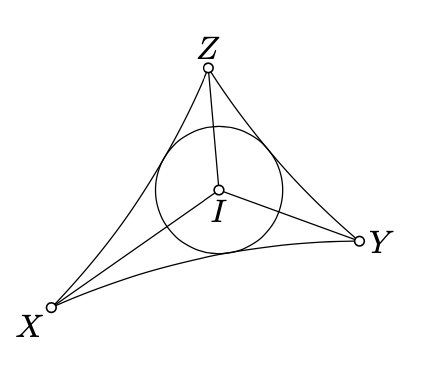13.2: Inradius of h-triangle
( \newcommand{\kernel}{\mathrm{null}\,}\)
The inradius of any h-triangle is less than 12⋅ln3.
- Proof
-
Let I and r be the h-incenter and h-inradius of △hXYZ.
Note that the h-angles XIY, YIZ and ZIX have the same sign. Without loss of generality, we can assume that all of them are positive and therefore
∡hXIY+∡hYIZ+∡hZIX=2⋅π

We can assume that ∡hXIY≥23⋅π; if not relabel X, Y, and Z.
Since r is the h-distance from I to (XY)h, Proposition 13.1.1 implies that
r<12⋅ln1+cosπ31−cosπ3=12⋅ln1+121−12=12⋅ln3.
Let ◻hABCD be a quadrangle in the h-plane such that the h-angles at A, B, and C are right and ABh=BCh. Find the optimal upper bound for ABh.
- Hint
-
Note that the angle of prarllelism of B to (CD)h is bigger than π4, and it converge to π4 as CDh→∞.
Applying Proposition 13.1.1, we get that
BCh<12⋅ln1+1√21−1√2=ln(1+√2).
The right hand side is the limit of BCh if CDh→∞. Therefore, ln(1+√2) is the optimal upper bound.


